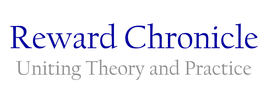|
With companies constantly striving for competitive advantage, continued innovation is central to the success of many companies. A Chinese study examined innovative employee behavior across multiple industries and the role of contextual and dispositional factors in this behavior. The study found that innovation job requirements and employee intrinsic interest in innovation had a significant impact on employee innovative behavior, and furthermore that reward could play an important role in eliciting innovative behavior.
Key Topics: Perceived innovation job requirement; Innovative behavior; Intrinsic interest in innovation; Rewards
Title of Reviewed Article: When perceived innovation job requirement increases employee innovative behavior: A sensemaking perspective
Researchers: Shung Jae Shin (Portland State University), Feirong Yuan (University of Texas), and Jing Zhou (Rice University). Publication: Journal of Organizational (2017), Vol. 38 No 1, pp. 68–86. __________________________________________________________________________ Setting the Scene Employee innovative behavior is a complex behavior relating to the development and implementation of new ideas and concepts in respect to processes, products, and services, which when successful, can lead to significant competitive advantage for companies (Anderson, Potočnik, & Zhou, 2014). Employees engaging in innovative behaviors acts as a precursor to the production of innovative outcomes, and as such, the importance to companies of identifying factors that facilitate greater innovative behavior should not be underestimated (Anderson, De Dreu, & Nijstad, 2004). Research suggests that there is a relationship between employees’ perception of innovation job requirements and their innovative behavior (Anderson et al., 2014), with employees more likely to engage in innovative behavior when they perceive that their job requires certain innovative behavior (Shalley, 2008), although some researchers have highlighted the complexity of this relationship and that moderating factors are likely to influence the relationship (Yuan & Woodman, 2010). The current study examines the role of a number of potential moderating factors. Intrinsic interest in innovation relates to an individual’s level of enjoyment of and preference for innovative behaviors (e.g., Tierney, Farmer, & Graen, 1999; Yuan & Woodman, 2010), and may influence the effect of perceived innovation job requirement on innovative behavior. Another potential moderating factor, perceived performance-reward expectancy, relates to the reward that employees expect for innovative behavior. Employees are likely to perceive high performance-reward expectancy when significant rewards are offered to employees (e.g. bonuses, promotion) for innovative performance. Research also indicates that when employees believe that innovative behavior will lead to tangible benefits to the company, this can have an influence on the innovative behavior they display, as such perceptions influence the judgements employees make on the value and meaningfulness of certain innovative behaviors (Hekman et al., 2009; Yukl et al., 1999). In light of this, the researchers put forward three hypotheses for examination in their study. Hypothesis 1 – “Intrinsic interest in innovation moderates the relationship between perceived innovation job requirement and innovative behavior such that perceived innovation job requirement will have a stronger positive relationship with innovative behavior for employees with lower levels of intrinsic interest in innovation.” Hypothesis 2 – “Perceived performance-reward expectancy further moderates the two-way interaction between perceived innovation job requirement and intrinsic interest in innovation such that perceived innovation job requirement will positively relate to innovative behavior for employees with low intrinsic interest in innovation only when perceived performance-reward expectancy is high.” Hypothesis 3 – “Perceived value for the organization further moderates the two-way interaction between perceived innovation job requirement and intrinsic interest in innovation such that perceived innovation job requirement will positively relate to innovative behavior for employees with low intrinsic interest in innovation only when perceived value for the organization is high.” How the research was conducted This study surveyed 396 employees and their supervisors (a total of 72 supervisors) from 3 companies in China. Employees worked primarily in administration, customer services, and manufacturing roles. The participating companies were in the transportation, textiles, and electronics industries. Employees completed various surveys. Employees’ perceived innovation job requirement was assessed via Yuan and Woodman’s (2010) innovativeness as a job requirement scale, while individual intrinsic interest in innovation was measured via the using Tierney et al.’s (1999) innovation scale. Performance-reward expectancy was assessed using three items from Riggs and Knight’s (1994) personal outcome scale. Perceived value for the organization was assessed using a three-item scale developed by the researchers for this study. Supervisors were also asked to assess the innovative behavior of their employees using the Scott and Bruce (1994) innovative behavior scale. Additionally, the researchers assessed data on control variables such as age, gender, education, job tenure, organization tenure, supervisor relationship quality. Key Research Findings Hypothesis 1 was supported, with intrinsic interest in innovation moderating the relationship between perceived innovation job requirement and innovative behavior. The results showed that perceived innovation job requirement had a stronger positive relationship with innovative behavior for employees with lower levels of intrinsic interest in innovation. Hypothesis 2 was also supported by the results. Perceived performance-reward expectancy was shown to moderate the relationship between perceived innovation job requirement and intrinsic interest in innovation. When perceived performance-reward expectancy was high, perceived innovation job requirement had a positive relationship with innovative behavior for employees who had low intrinsic interest in innovation but not for those with high intrinsic interest in innovation. On the other hand, when perceived performance reward expectancy was low, no relationship was found for employees with either high or low intrinsic interest in innovation. The results supported Hypothesis 3. When perceived value for the organization was high, perceived innovation job requirement had a positive relationship with innovative behavior for employees who had a low intrinsic interest in innovation, but not for those employees who had a high intrinsic interest in innovation. No such relationships were found when perceived value for the organization was low. Results Commentary This study looked to examine the role of innovation job requirement on employee innovative behavior. The study results demonstrate that innovation job requirement does not have a universal positive effect on innovative behavior, but rather innovation job requirements appear to only increase innovative behavior under certain conditions and for certain employees. For example, perceived innovation job requirement had a greater positive relationship with innovative behavior for employees who had lower levels of intrinsic interest in innovation. Furthermore, for those employees who had low intrinsic interest in innovation, perceived innovation job requirement was only positively related to innovative behavior when they were being rewarded for such behavior or they saw it of value to the company. The results highlight the important role that intrinsic interest can have in innovative behavior but also the central role that external motivators, such as reward can have in generating innovative behavior, particularly when intrinsic interest in innovation is low. Organizational and Reward Implications This study has some interesting potential implications. The results indicate that for employees with a high intrinsic interest in innovation, it may be unnecessary for companies to further emphasize innovation job requirements in order to elicit innovative behavior. However, for employees with low intrinsic interest in innovation, the results suggest that perceived innovation job requirement can encourage greater engagement in innovative behavior. This study further suggests that in order to effectively change innovative behavior through innovation job requirement, companies should accompany innovation job requirements with rewards, such as bonuses or pay increases, thus appealing to employees’ self-interest, which would likely appeal most to those with low intrinsic interest in innovation who are in greater need of external motivators. The results also indicate that making it clear to employees how their innovative behavior contributes to company performance can facilitate greater innovative behavior, as it gives employees a greater sense of the meaningfulness of their innovative behavior. Final Thoughts This study builds on our understanding of innovative behavior in the workplace and highlights important contextual and dispositional factors in the eliciting innovative behavior from employees. To expand on the results of this study, it is hoped that future research will examine the long-term impact of innovation job requirement, as it is plausible that perceived job requirement for innovation may change employees’ intrinsic interest in innovation over time and at different stages of the innovative process the effect of perceived innovation job requirement on innovative behavior may differ. __________________________________________________________________________ Source Article: Shin, S. J., Yuan, F., & Zhou, J. (2017). When perceived innovation job requirement increases employee innovative behavior: A sensemaking perspective. Journal of Organizational, 38(1), 68–86. Published by: John Wiley & Sons, Ltd. For further details and access to the full journal article Click Here (subscription or payment may be required). __________________________________________________________________________ References: Anderson, N., De Dreu, C. K., & Nijstad, B. A. (2004). The routinization of innovation research: A constructively critical review of the state-of-the-science. Journal of Organizational Behavior, 25(2), 147–173. Anderson, N., Potočnik, K., & Zhou, J. (2014). Innovation and creativity in organizations: A state-of-the-science review, prospective commentary, and guiding framework. Journal of Management, 40(5), 1297–1333. Hekman, D. R., Steensma, H. K., Bigley, G. A., & Hereford, J. F. (2009). Effects of organizational and professional identification on the relationship between administrators’ social influence and professional employees’ adoption of new work behavior. Journal of Applied Psychology, 94(5), 1325–1335. Riggs, M. L., & Knight, P. A. (1994). The impact of perceived group success-failure on motivational beliefs and attitudes: A causal model. Journal of Applied Psychology, 79(5), 755–766. Scott, S. G., & Bruce, R. A. (1994). Determinants of innovative behavior: A path model of individual innovation in the workplace. Academy of Management Journal, 37(3), 580–607. Shalley, C. E. (2008). Creating roles: What managers can do to establish expectations for creative performance. In J. Zhou, & C. E. Shalley (Eds.), Handbook of organizational creativity (pp. 147–164). New York: Lawrence Erlbaum Associates. Tierney, P., Farmer, S. M., & Graen, G. B. (1999). An examination of leadership and employee creativity: The relevance of traits and relationships. Personnel Psychology, 52(3), 591–620. Yuan, F., & Woodman, R. W. (2010). Innovative behavior in the workplace: The role of performance and image outcome expectations. Academy of Management Journal, 53(2), 323–342. Yukl, G., Kim, H., & Chavez, C. (1999). Task importance, feasibility, and agent influence behavior as determinants of target commitment. Journal of Applied Psychology, 84(1), 137–143. Comments are closed.
|
Popular Reward Chronicle Searches
Compensation. Pay for performance Benefits Millennials Exec compensation Motivation Gender Topics
All
Join The Reward Chronicle Team
Are you passionate about reward? We’d love to hear from you. Click here for more details on how to contact us. |








